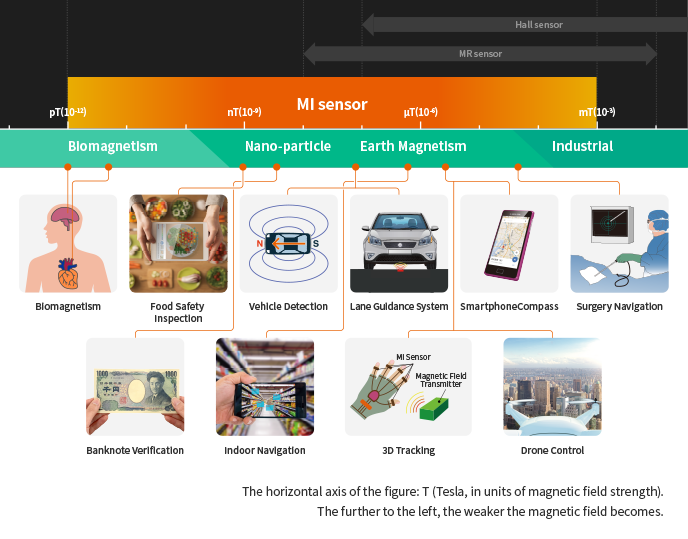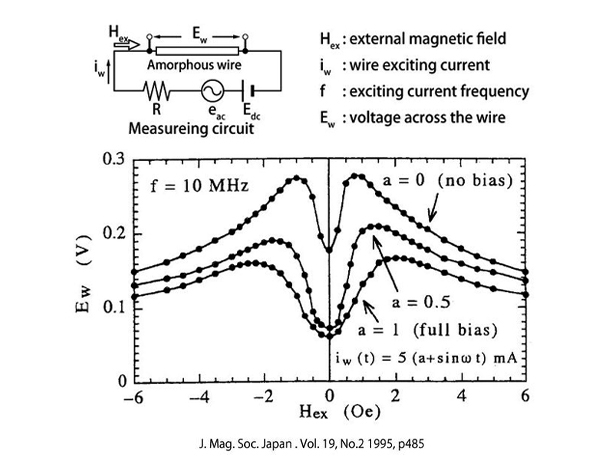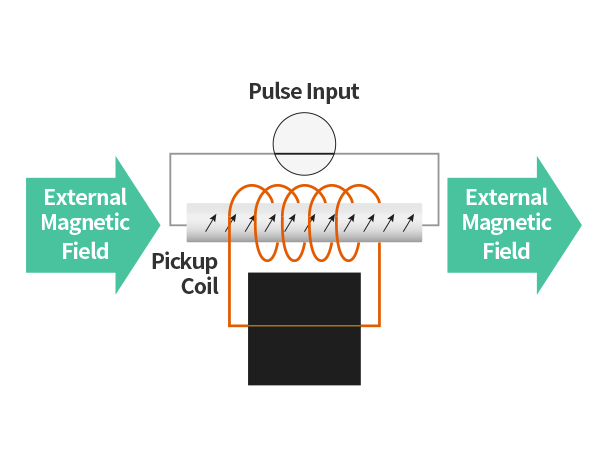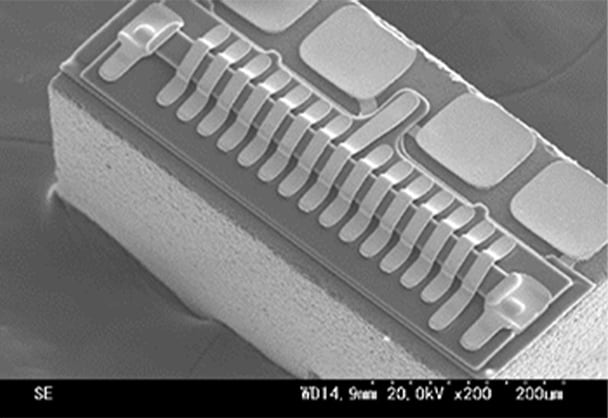MI Technology
High sensitivity, high speed response, micro and low power consumption

01
Extremely high sensitivity
This is the essence of Only 1.
The MI sensor has a wide sensitivity that can cover from the milli-tesla region, which is equivalent to a Hall sensor or an MR sensor, to the weak magnetic field of the picotesla. In the region below a few microtesla of the geomagnetic level, new applications that have until now not been possible can considered by utilizing the miniature sized and low power consumption MI sensor.

The horizontal axis of the figure: T (Tesla, in units of magnetic field strength). The further to the left, the weaker the magnetic field becomes.
It has a wide sensitivity covering from the millimeter-tesla region, which is equivalent to a Hall sensor or an MR sensor, to the weak magnetic field of the picotesla. Especially in the region below a few microtesla at the geomagnetic level, by utilizing the miniaturized and low-power-consumption MI sensor, many new applications that had never been seen before will expand.
02 In addition, it is ultra-compact.
While approaching the sensitivity of SQUID sensors, which require large cooling devices, we have also achieved package sizes that can be used in smartphones and wristwatches.
※SQUID: Abbreviation for Superconducting Quantum Interference Device.

03
In addition,
High-speed response and low power consumption.
Response of 100 kz is possible. Low power consumption despite high sensitivity due to pulse driving.

04
This is because of
fine metal fibers.
The only company in the world that has the technology to mass produce amorphous wire thinner than a hair is Aichi Steel. This metal fiber has a non-crystalline state (amorphous state) that does not possess a crystal structure by conducting rapid solidification by the spinning-in solution method. Then, this state shows the ideal soft magnetic characteristics for the sensor, and the features of MI are derived.


05 MI effect created by fine metal fibers
The MI effect (magnetic impedance effect) refers to an electromagnetic phenomenon in which the impedance changes in response to an external magnetic field with high sensitivity when a pulsed current is applied to an amorphous wire. (J.Mag.Soc., Japan Vol, 19. No.2, 1995,, p485, etc.)


06 MI sensor elements
Micro-sized MI-elements have been developed using our original magnetic MEMS (Micro-Electro-Mechanical-System) technique for microfabricating magnetic materials.

